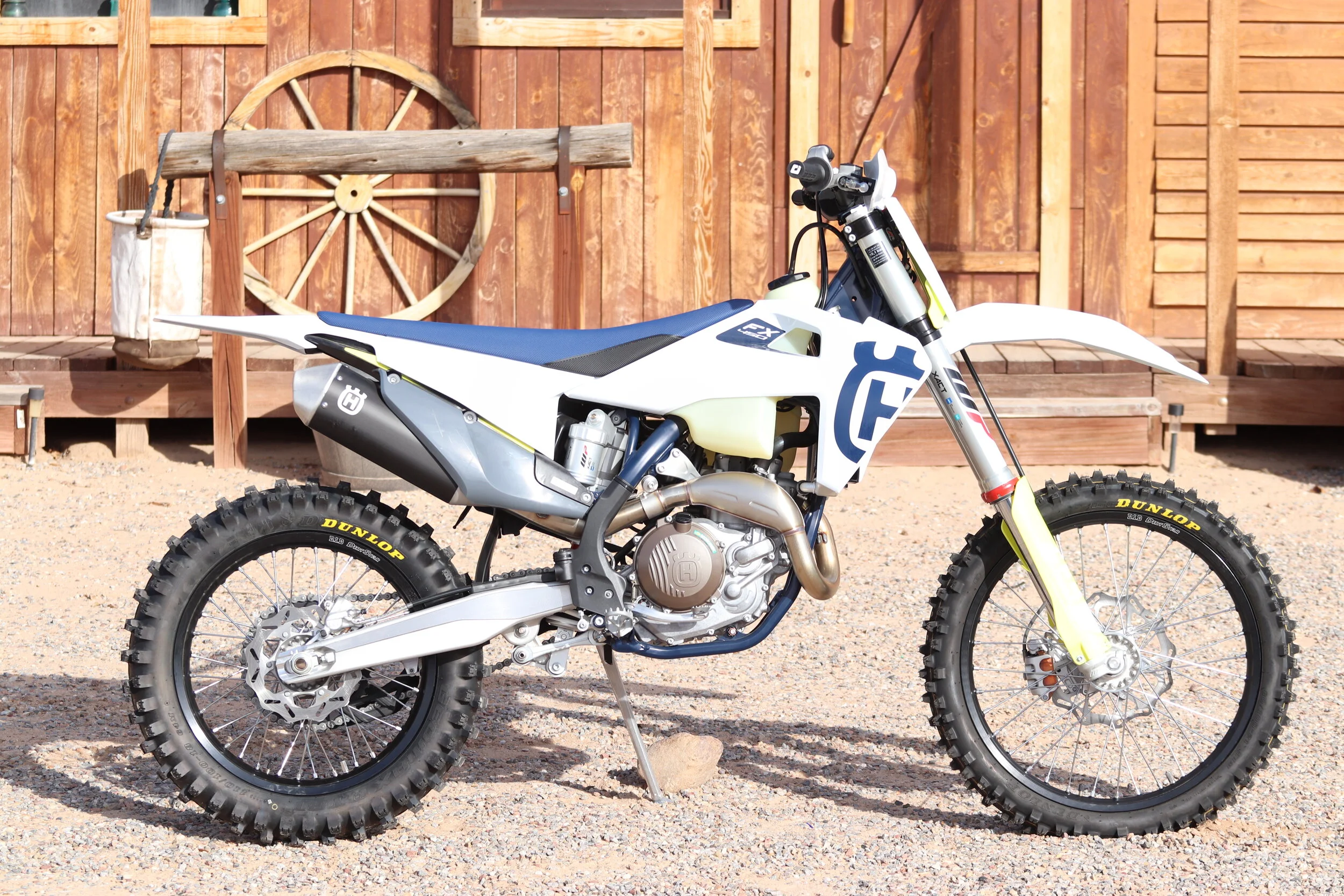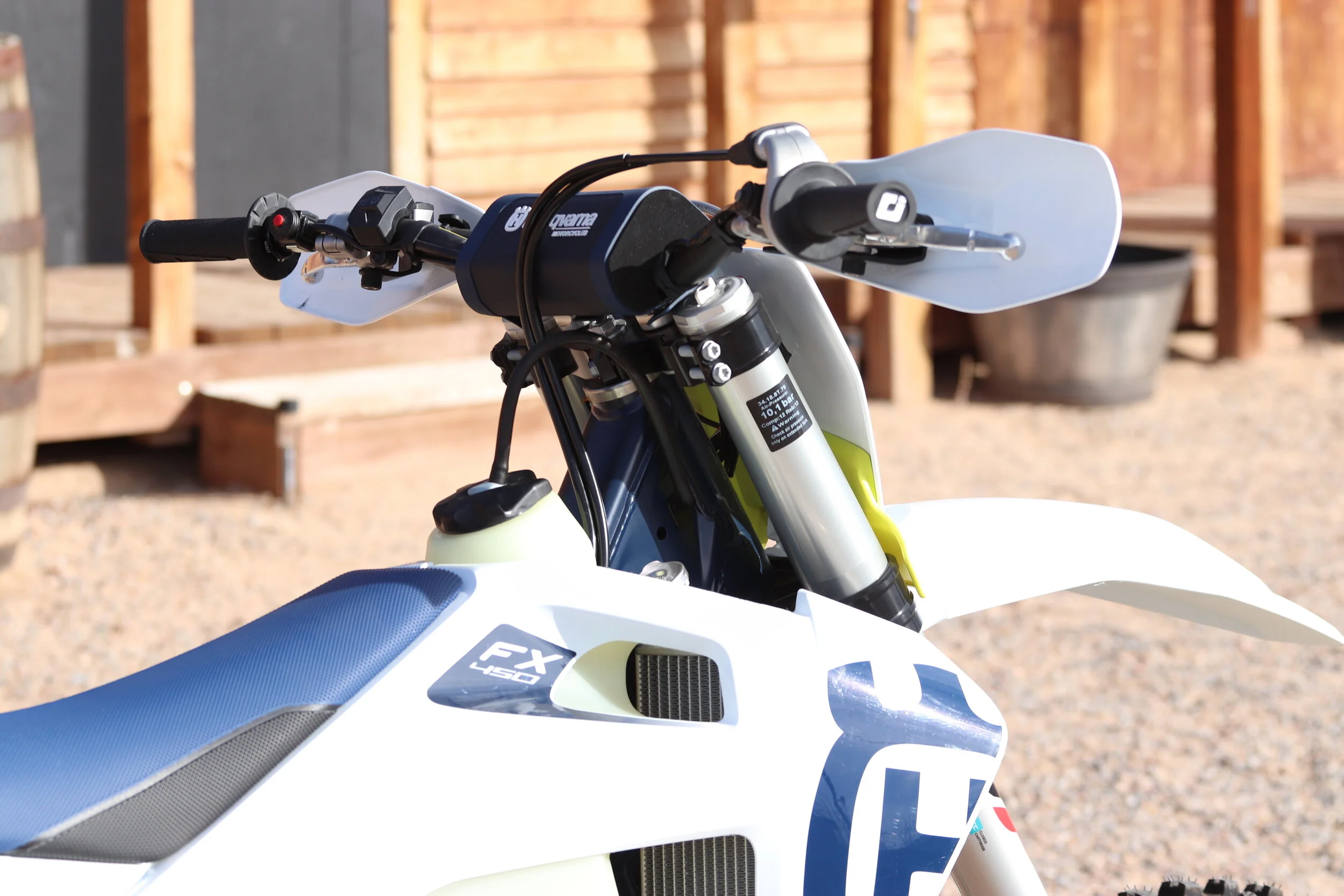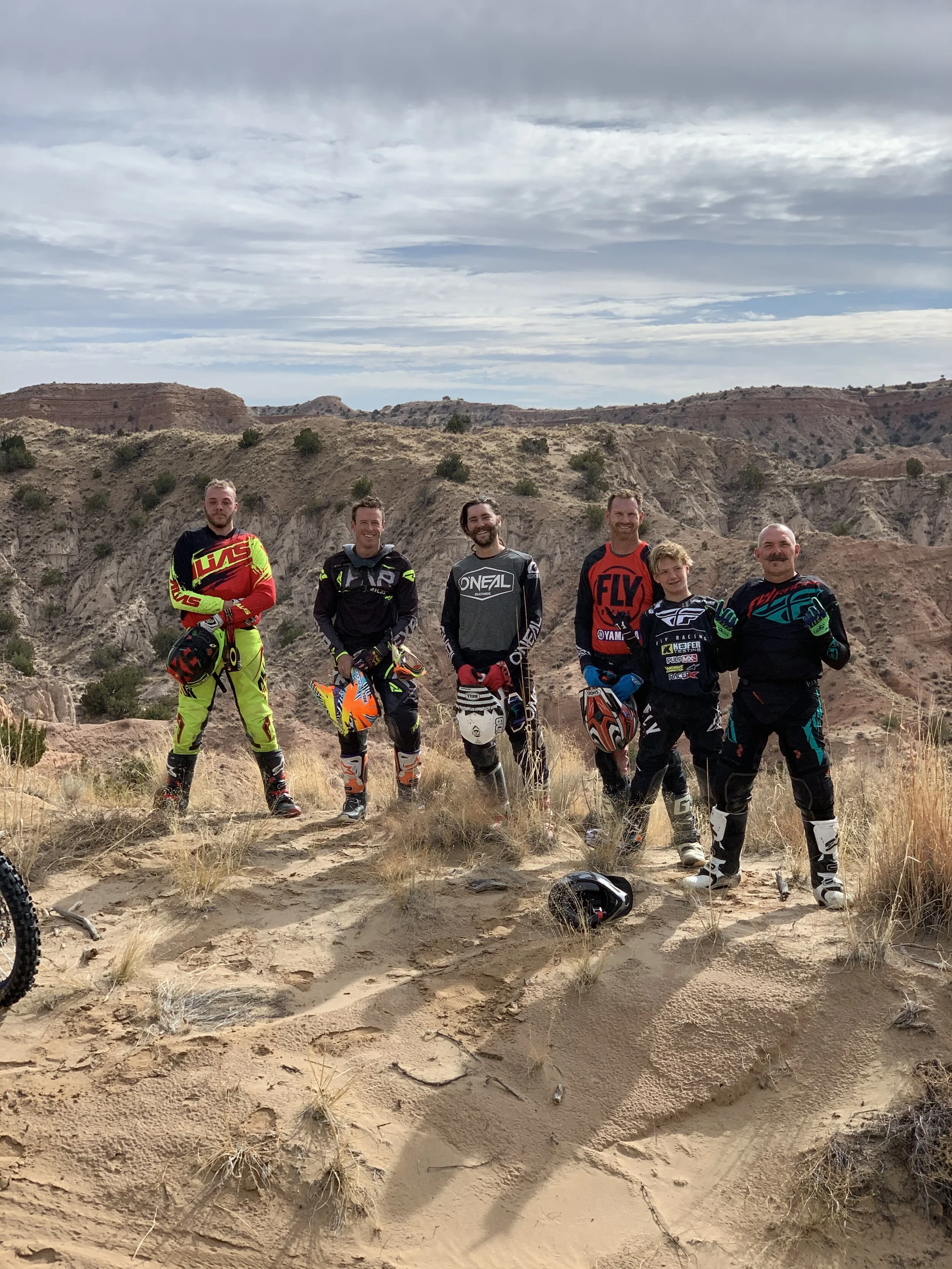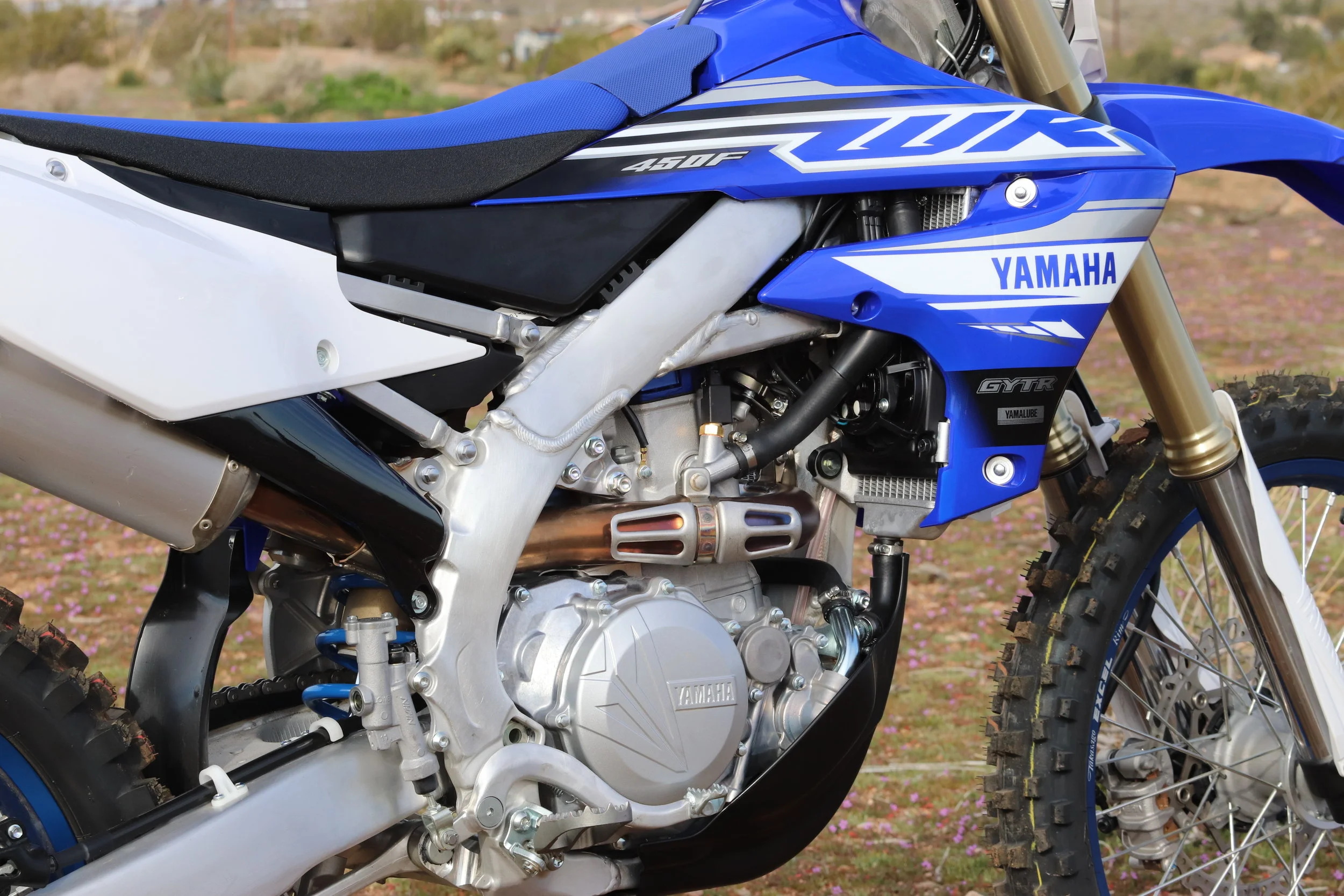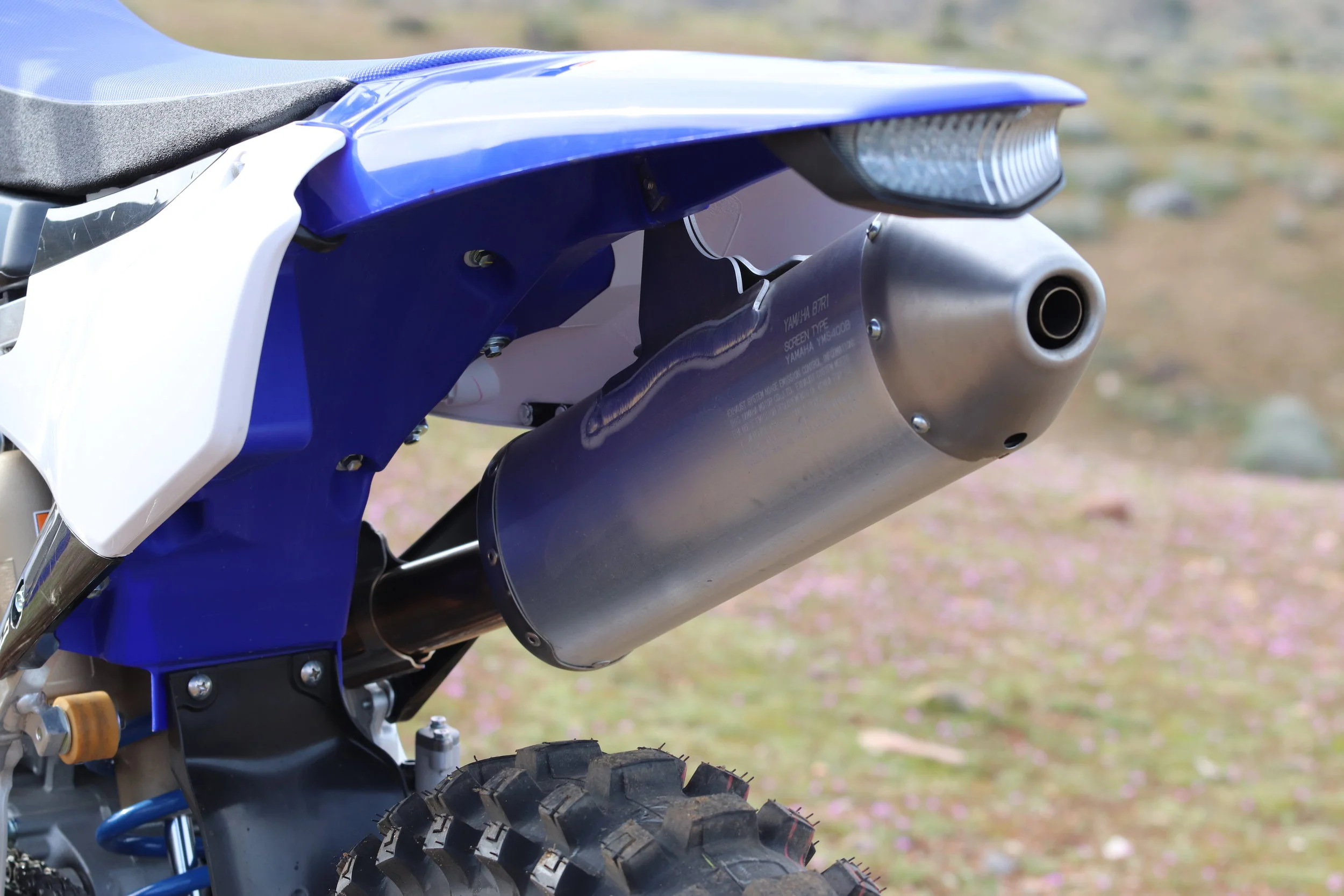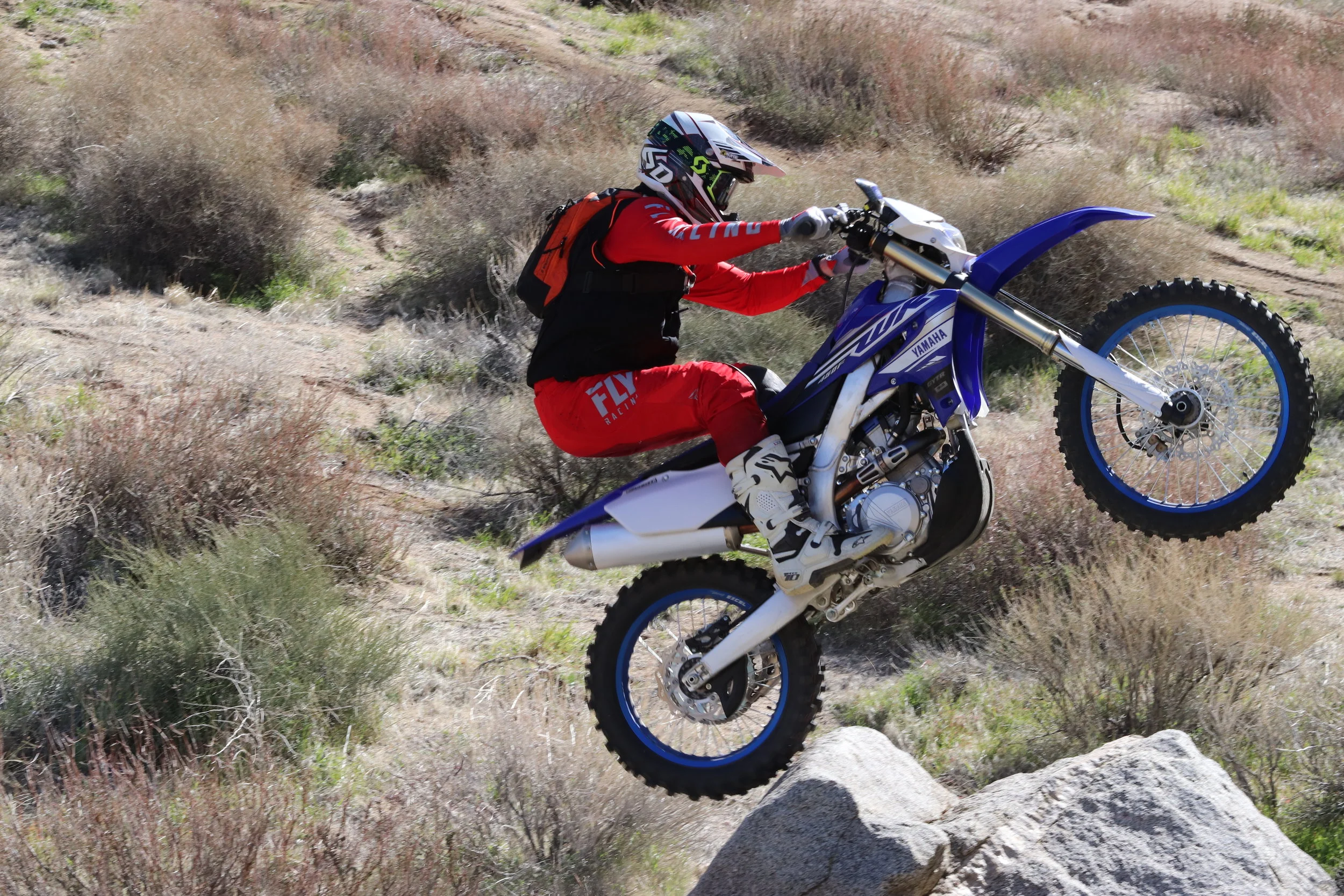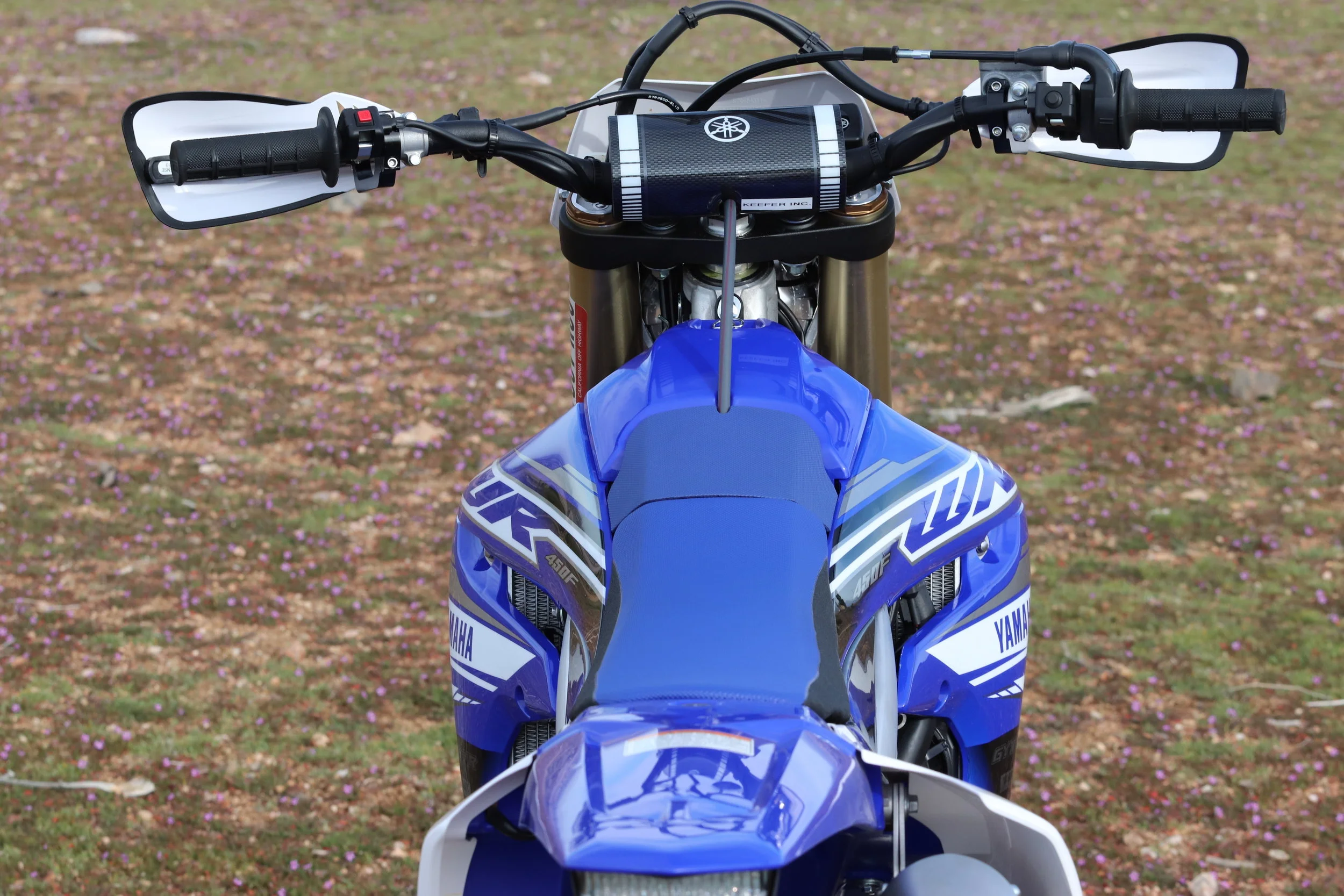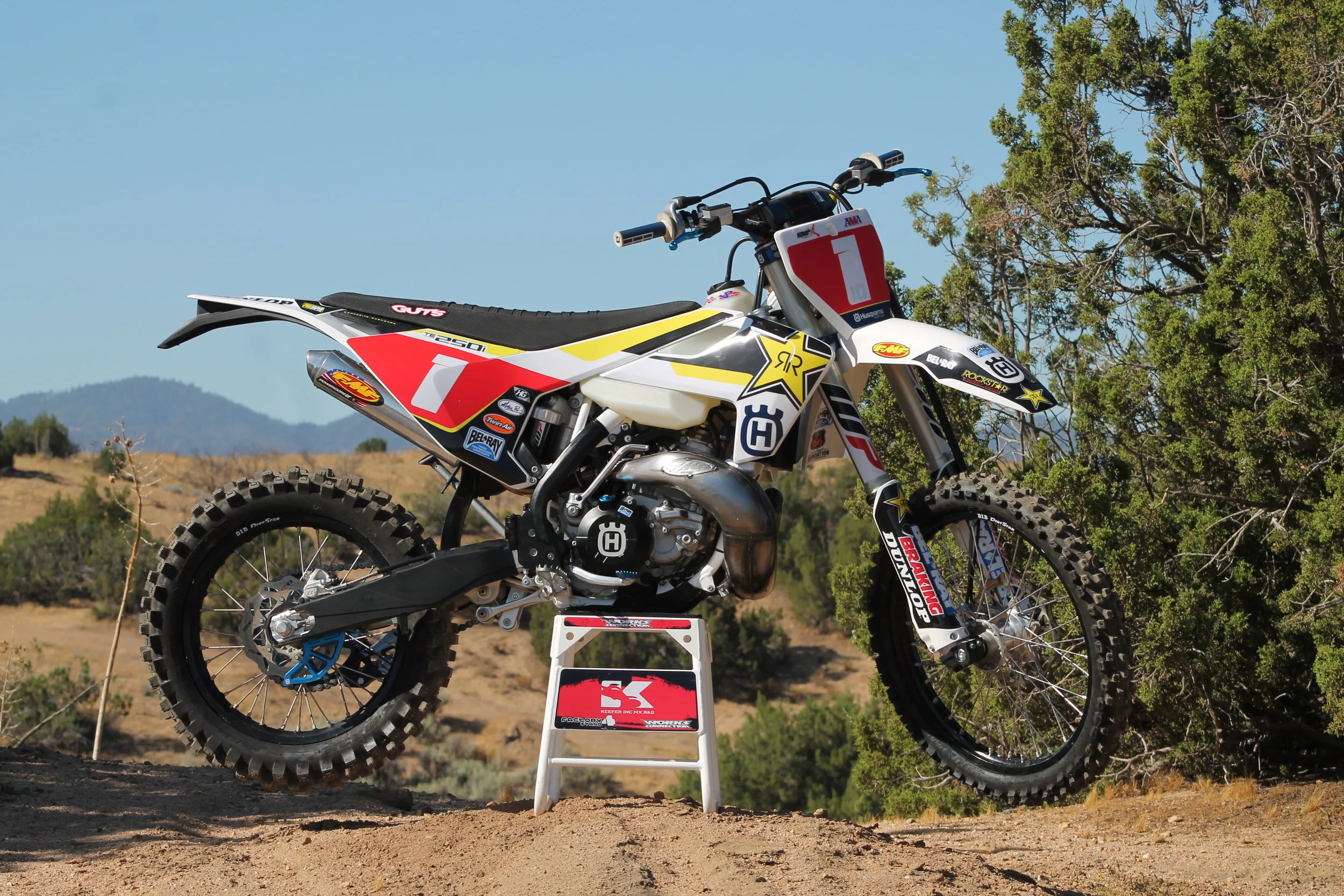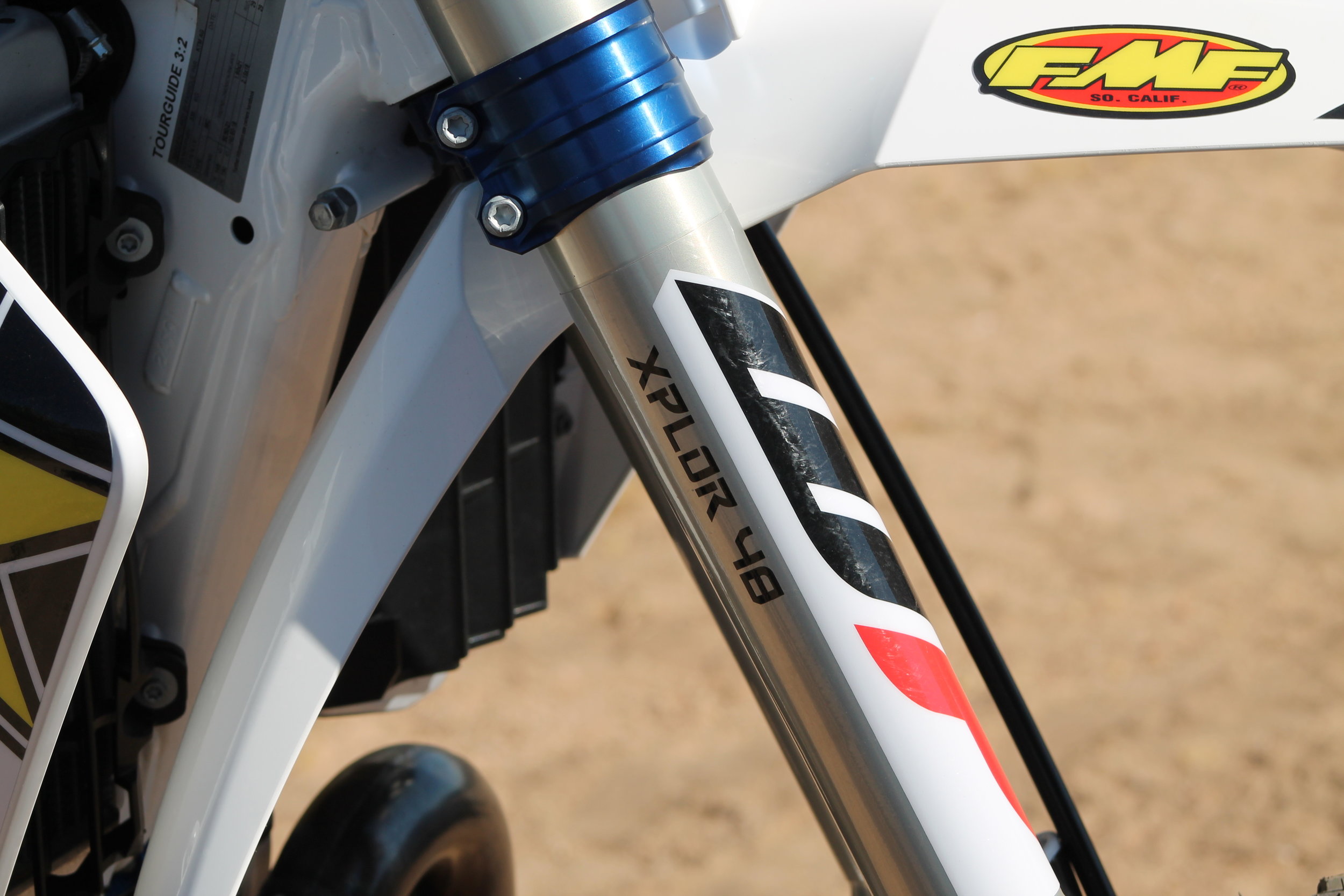Are you a hybrid type of rider that likes to ride off-road as well as some motocross? Maybe you’re not just a one dimensional rider and would love to go race a GP on the same weekend as a local motocross race. Well Husqvarna has a bike that is directed towards that type of rider! The FX450 is very similar to the FC450, but the FX450 comes with different ignition mapping, softer suspension valving, a softer rear shock spring, an 18-inch rear wheel, a kickstand, and a 2.25-gallon tank. It’s not green sticker legal and doesn't come with a spark arrestor so be forewarned that you may want to add a slip on spark arrestor to this steed in order to make “Johnny Law” happy. To test this Husqvarna out, I decided to get the hell out of California, in order to get a different perspective/first impression of the FX450 in the vast terrain of Rio Rancho, New Mexico. The area I tested at had a wide variety of tight single track, long sandy uphills, technical rocky terrain, fast whoop sections, as well as the occasional natural terrain motocross/turn track. Perfect for this kind of test! The downside? I didn’t have a professional photographer with me to get the bike in action. This was a true to life off-road trail ride with your buddies, talking trash, bench racing, but without the cool guy photographer. We will eventually get some action shots, but to me, the most important aspect to any test is getting the information across to you all. Hopefully we can do that in this article.
Nothing says variety like a barber shop, a bar, a bath house, and a 2020 Husqvarna FX450 in a photo.
If you’re looking to take this Husqvarna straight from the dealer show room to your local BLM trails, you might want to get a spark arrestor. The FX450 has a closed course designation, so in order to be “legal” make sure to be prepared before you venture out into public lands. After spending almost five engine hours on the 2020 Husqvarna FX450 I came away with this impression as well as the suspension setting below.
Engine: Just like the FC450, the FX450 is deceivingly fast. I received the bike with 0.2 hours on it and it took 1.8 hours for me to actually feel the engine free up. There was a lot of engine braking in the initial hour or so, but after that you can feel less de-cel pitching and more overall torque/pulling power. The FX450 should feel like the FC450 because it’s the same motor, same gearing as a 2019 FC450 (13/48), but the FX450’s ECU settings are smoother throughout the power curve. You may want more excitement on low RPM’s if you're in sandy conditions, but on tight single track the engine is buttery smooth and easy to ride in second gear. This engine isn't a huge third gear torque monster like the YZ450FX, but if you learn to ride in second gear instead of third, the FX450 can chug/lug up anything with ease. Second gear is longer than the YZ450FX, so if you're coming off of another brand just know that a lower gear is more usable than you might think. Another feature that makes me smile is how much top end pulling power the FX450 has. Got a long sandy hill you need to get up? Not a problem. Click the Husqvarna FX450 into either third or fourth gear and let it do the work for you. It literally feels like it never hits the rev limiter and keeps pulling where other bikes require more finesse shifting. The FX450 comes with a handlebar mounted map switch just like the FC450, but going back and forth between map 1 and map 2 didn't prove to be life changing in either direction. Both maps feel similar and putting the FX450 into “TC” mode helps with slow speed slippery conditions, which didn't happen very much where we were riding. The overall engine character is an easy to ride, yet super powerful pull that fits a wide range of riding abilities. It’s not going to rip your socks off, but it’s one of those engines that you appreciate the more you ride.
Chassis: On this test, I ended up going back/forth between a 2019 Yamaha YZ450FX and the Husqvarna FX450. While doing this I noticed that the Husqvarna may not feel as planted on high speed trails as the Yamaha, but when in tight single track the Husqvarna feels more playful and easier to manage. The Husqvarna has a good amount of traction on lean angle and although it’s not as stable as the Yamaha at high speed, it can be dialed in with some suspension tuning to make it better when twisting the throttle hard down a rough, long trail (see suspension setting). The FX450 loves flowy type single track where the trail goes back and forth. We had a five mile section of trail that was similar to a long turn track and the Husqvarna absolutely feels at home in these types of conditions. The faster, more rolling whoops there were, the more I felt like the Yamaha was better suited for me in those areas of the trail.
Suspension: The trails that I tested on had more than enough variety in terrain and I felt anything other than very slow/rocky terrain, the Husqvarna needed more hold up, especially in the front end. Below is the setting that I came up with that gave the Husqvarna FX450 the most balance, as well as the most comfort for a rider between 170-195 pounds (without gear). With this setting the FX450 becomes more stable at higher speeds as it just slows the action of the suspension down, which allows you to hit obstacles at speed faster/harder with more confidence.
Fork:
Fork Height: 3mm (5mm on tighter single track)
Air Pressure: 10.3-10.4 bar (10.1 stock)
Compression: 10
Rebound: 11
Shock:
Sag: 105mm
L/S Compression: 12
H/S Compression: 1-3/4 out
Rebound: 11
Ergonomics/Extras: The rider triangle of the Husqvarna FX450 is comfortable for the long haul. I rode almost a 100 miles on its maiden voyage and felt comfortable on it right away. For motocross I usually like to trim the stock handlebar down, but for west coast off-road conditions, the FX450’s bar length (811mm) was nice because it put me in a better rider attack position when standing up all day. Husqvarna needs to rethink their seat cover material for the FX line up however as I feel as if it’s a much too aggressive seat cover for a rider that is in the cockpit for more than 4-6 hours a day. The fuel range of the Husqvarna FX450 is superb as I managed to squeeze in over 50 miles on a tank of fuel (with a little to spare), with miles that were mixed with plenty of gas guzzling sand.
Some of the backdrop in New Mexico where we tested the 2020 Husqvarna FX450.
FAQ: “Keefer, should I get a Husqvarna FC450 or FX450”? If it was me and I was doing a 70/30 off-road to moto ratio, I would be on a FX450 simply because of the comfort that I get on longer trail rides. The FC450 is made to carve inside lines and go fast and I feel like the FX450 is more of a friendlier machine for longer distances. Yes, it’s still fast, but it has more comfort with its suspension and ECU settings, where the FC450 has a firmer, slightly snappier throttle response. The occasional moto session with your buddies is fine on the FX, as long as you go to a suspension setting that doesn't bottom up faces of jumps. The stock FX450 suspension setting is much too soft for a motocross track.
FAQ: “Keefer, will my FX450 parts interchange with my FC450 and vice versa”? Yes, the FX450 parts (wheels, tank, etc.) will bolt right onto the FC450”.
This is just a first impression… I will be logging more off-road miles on this machine and may even take it to a Grand Prix event just to see how versatile this Husqvarna FX450 really is. If you want to “hear” what I have to say about the Husqvarna FX450 and get some extra tidbits you may have not received in this article, listen to the RMATVMC Keefer Tested Podcast. If you have any questions about this test or the 2020 Husqvarna FX450, please feel free to email me at kris@keeferinctesting.com.
HUSQVARNA FX450 SPECS:
Engine type: SOHC, electric-start, 4-valve
4-stroke
Displacement: 450cc
Bore & stroke: 95.0mm x 63.4m
Fuel delivery: Keihin EFI, 44mm
Fuel tank capacity: 2.3 gal. (8.5 l)
Lighting: No
Spark arrester: No
EPA legal: No
Running weight, no fuel: 224 lb.
Wheelbase: 58.5″ (1485mm)
Ground clearance: 14.6″ (370mm)
Seat height: 37.8″ (960mm)
Tire size & type:
Front: 90/90-21 Dunlop Geomax AT81F
Rear: 120/90-18 Dunlop Geomax AT81
Suspension:
Front: WP AER 48, adj. reb./comp.,
12.2″ (310mm) travel
Rear: WP aluminum piggyback, adj. prld.,
hi & lo comp., reb., 11.8″ (300mm) travel
Country of origin: Austria
Suggested retail price: $10,099
Manufacturer: www.husqvarna-motorcycles.com


